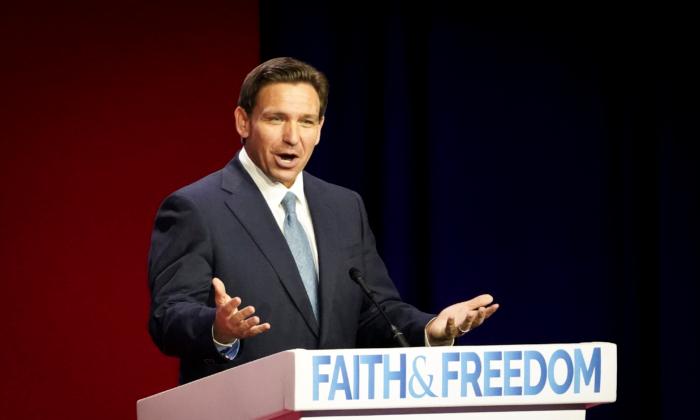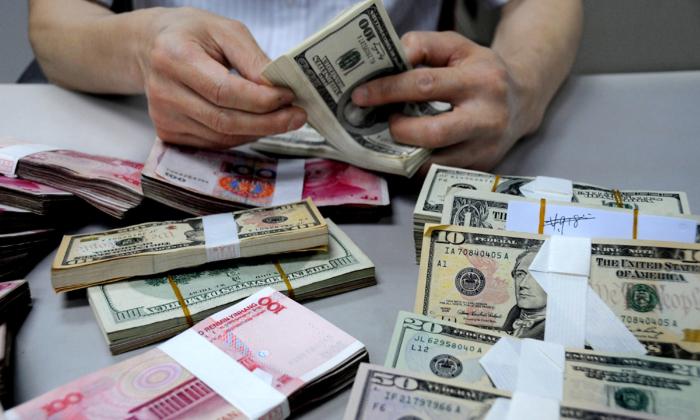After the outbreak of the CCP virus in 2020, China’s economic growth has been declining rapidly. Various structural problems in the Chinese economy began to erupt visibly in 2021. Among them, the slow sales of real estate have resulted in a sharp drop in the revenue of local governments at and below the provincial level.
China implemented a tax-sharing system reform in 1994, after which the central regime enjoyed an increase in tax revenue, while the local governments’ fiscal revenues fell sharply. A few years later, the increase in land prices driven by the real estate market became a major part of China’s local government revenue.
According to a research report issued by China Yuekai Securities Co., Ltd. on Nov. 2, the tax revenue from China’s real estate industry in 2019 reached 2.6 trillion yuan ($408.8 billion), and the national land transfer revenue stood at 7.1 trillion yuan ($1.12 trillion). The sum of the two is equivalent to 35.2 percent of the sum of the general public budget and the budget of government-managed funds.
Since the third quarter of 2021, China’s land market has cooled down, local land transfer revenue has plummeted, land auctions in less developed cities have been cold, the percentage of land unsold and withdrawn from the market has increased, and the land premium rate has dropped rapidly.
Salary Cuts Take Place in Regions Highly Dependent on Land Sales
The provinces and cities reportedly have cut salaries for civil servants are all areas with high dependence on land sales which previously had low debt liabilities.According to Yuekai Securities’ report, China’s provinces and cities in 2020 are divided into four categories according to the degree of financial dependence on land sales and their debt ratio. If the median land transfer income dependency is higher than 24 percent median, it is referred to as high land dependency, and if the debt ratio is higher than 100 percent—the international warning line—it is defined as a high debt ratio.
The first category is areas with high land dependence and high debt ratios, represented by Tianjin City, Guizhou, Hunan, Guangxi, and Fujian provinces.
The second category is areas with high land dependence and low debt ratios, which are typically represented by coastal provinces such as Zhejiang, Jiangsu, Shandong, Guangdong, and the city of Shanghai. These are the areas where the news of civil servants’ pay cuts has been reported recently. The land sales revenue in these areas is more directly used for urban infrastructure construction or capital injection to establish local financing platforms. Therefore, the impact of the cooling of the land market on these provinces is mostly reflected on the investment side.
The third category is areas with low land dependence and low debt ratios, with Tibet, Jiangxi, Gansu, and Shanxi as typical representatives. These provinces are relatively less affected by the cooling of the land market.
Local Governments’ Land Dependence and High Debt
China’s dependence on land sales for its fiscal revenues at different levels has its historical background, and the tax-sharing reform in 1994 was a watershed.According to data from Zhongda Securities, before 1994, China’s local fiscal revenue accounted for 78 percent of Chinese regime’s revenue. By 2019, the central regime’s revenue accounted for 46.9 percent, while local fiscal revenue fell to 53.1 percent. The fiscal deficits of local governments are covered by the issuance of bonds and fiscal subsidies from the central regime. The central regime has thus greatly increased its control over localities.
On the other hand, local governments also need to find other sources of income to gain greater freedom, and “land finance,” that is, relying on land sales to generate income, arises at that time.
In addition, the real estate and construction industries were the main sources of business taxpayers at that time, while the business tax was exclusive to local governments before the VAT reform, and other taxes and fees were also incurred in the process of land development and operation. Land finance therefore became the key to the operation of the local fiscal system and the foundation for credit expansion.
With the disappearance of China’s demographic dividend, risks in the real estate market have intensified, and high levels of local government debt have also aroused concerns from the outside world.
Proposal of Real Estate Tax Meets with Strong Opposition
The income from the sale of land is ultimately limited by market demand. Therefore, the Chinese authorities are planning to implement a new policy to impose property tax all over the country.In an interview with NTDTV, Cheng Xiaonong, an economist residing in the United States, said that the CCP’s sudden roll-out of real estate tax has two purposes: one is to squeeze the real estate bubble and avoid the predicament of the entire economy being hijacked by the real estate bubble; the other is to provide local finances with a stable new income source to replace land sale as the main revenue source.
The Wall Street Journal quoted insiders as saying that Xi Jinping’s idea of levying real estate taxes comprehensively has encountered strong resistance within the CCP. Many high-ranking officials own multiple properties. Xi’s new policy would force them to make major adjustments to their asset management.
As a matter of fact, urban homeowners in China own the dwelling but not the land, and they only have 70 years of land use rights. Considering that most of the property appreciation is the appreciation of land value, the majority of Chinese people oppose the authorities’ plan to levy real estate asset taxes.
Yuekai Securities said in its research report that in the future, local governments in China will no longer compete based on the amount of land they can sell and the favorable policies for different regions, but their overall governance ability and the ability to energize enterprises and high-skilled populations.
But in any case, when China’s economy continues to decline and the real estate market bubble bursts, the Chinese regime, especially those local governments with total expenditure as high as 85 percent of their total revenues, will be under great financial pressure. The salary cuts for civil servants may only be the beginning of the government’s reduction of expenditure. In the future, local governments that are short of money will face huge challenges in how to guarantee “grass-roots operations.”





